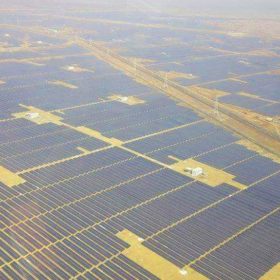SECI to float 4 GW of solar tenders in 4 months
Caught in a confusion of canceled auctions, tariff wars, safeguard duties and missed targets, the Indian government is now fast tracking solar power, having asked the Solar Power Corporation of India (SECI) to float 4 GW worth of tenders in four months.
CERC orders $30 million GST compensation payment
India’s Central Electricity Regulatory Commission (CERC) has ordered government agencies to reimburse nearly US$30 million incurred by solar power developers as additional capital expenditure under the Goods & Services Tax (GST) laws, which came into effect on July 1, 2017.
Tariff tussle grows over pricing of 970 MW project
The Solar Energy Corporation of India (SECI) and Karnataka Electricity Regulatory Commission (KERC) have locked horns over the power pricing of a 970 MW solar project.
SECI hikes tariff ceiling to lure bidders
Reeling from a no-show from bidders at various auctions, the Solar Energy Corporation of India (SECI) has raised the ceiling price for two of its mega tenders by 10 paise (US$0.0014) each.
India-Taiwan safeguard duty talks hit an impasse
India and Taiwan have failed to reach an agreement at the World Trade Organisation (WTO) over the 25% safeguard duties imposed by India on solar imports. The talks, however, will continue.
Indian PV procurement leapt to 3 GW in October figures
Developers gave short shrift to gloomy predictions about depreciation, protectionism and tax headwinds as tendering and auction figures soared, but they shied away from the tough price caps set for SECI’s procurement exercises.
SECI director floats idea of further large-scale reservoir PV
With the Solar Energy Corporation of India having already proposed 10 GW of solar be located on artificial bodies of water over the next three years, Shailesh Mishra has mooted ambitious plans at four more locations.
Solar still gaining as coal’s share of national capacity falls
India saw an increase in PV’s share of national generation capacity in the third quarter, as 2 GW more solar was added despite worries buffeting the industry.
SoftBank and Essel to develop 500 MW solar park
A failed association with IL&FS has failed to deter SoftBank from its plan to invest a staggering $1tn in Indian solar by 2030. Now the Japanese funding giant is working with Essel Infraprojects on a 500 MW plant, with further details yet to be revealed.
Falling rupee could threaten Rs28,000 crore of solar projects
As the currency continued to fall today, analysts are concerned developers will see any savings from falling module prices disappear, and lenders may get nervy, putting the national solar target in grave doubt.














